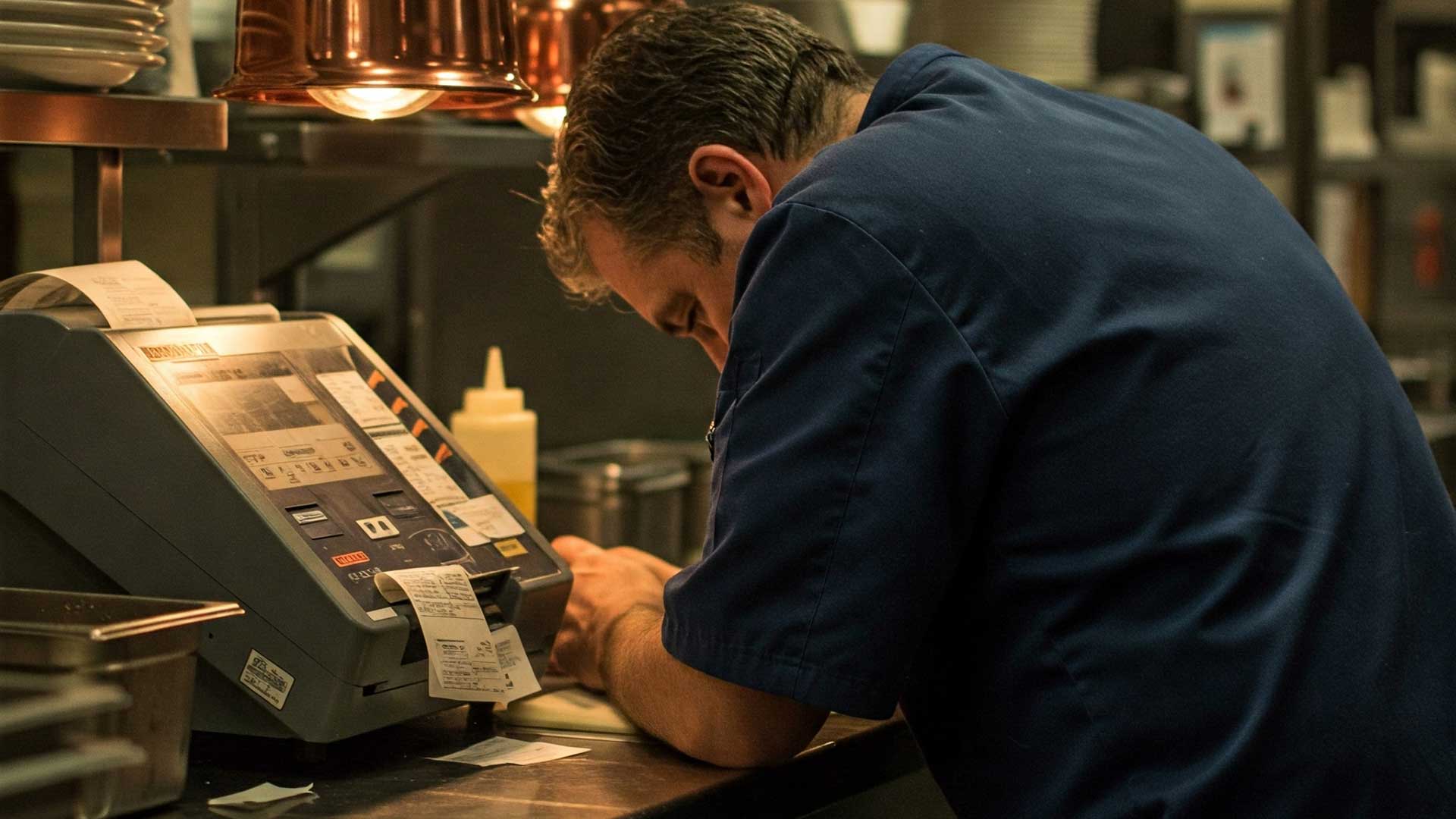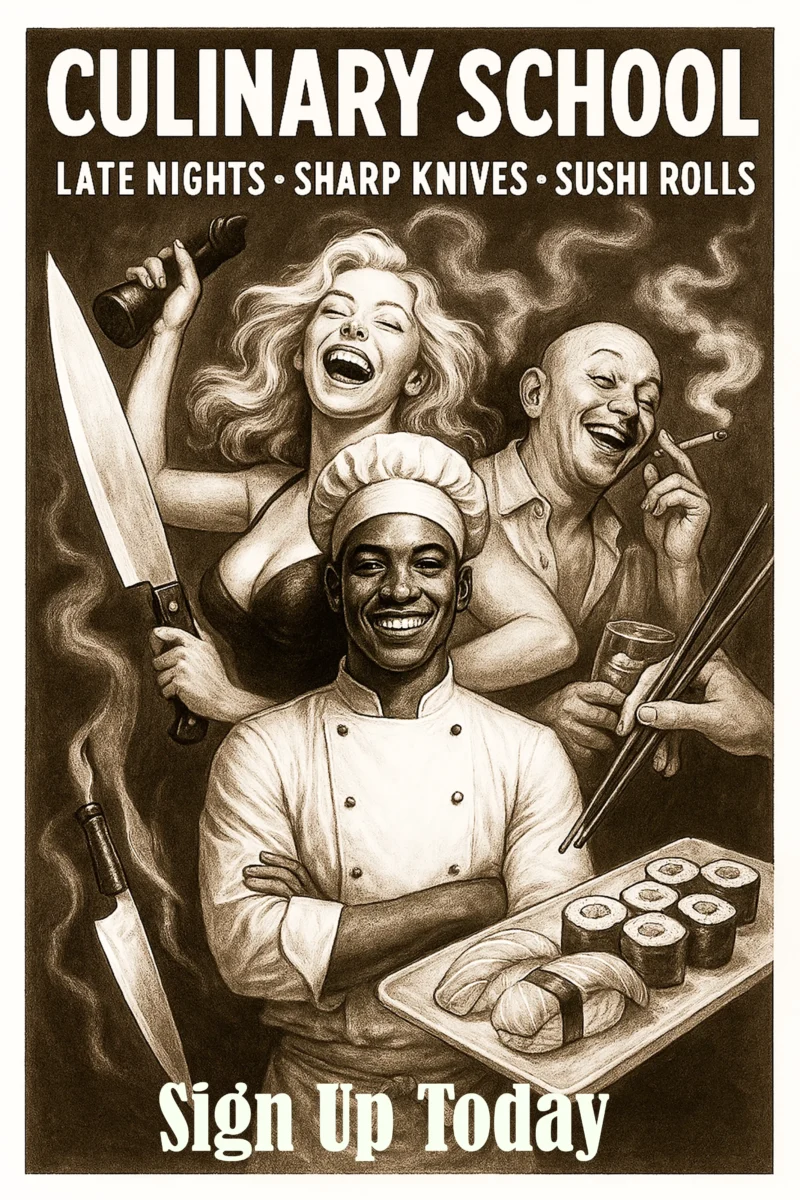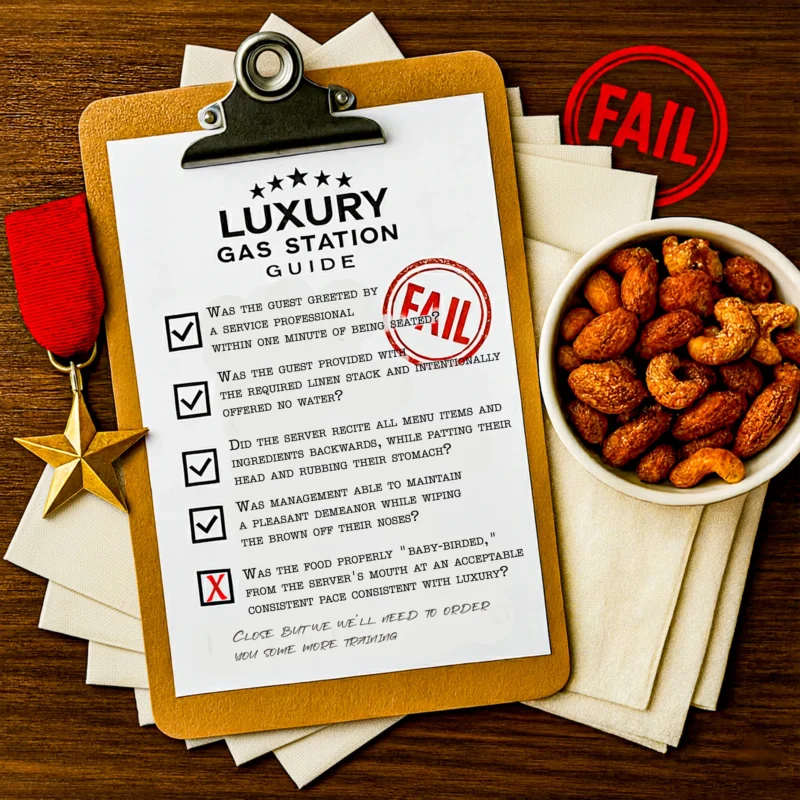Beyond the Burnout: Real Talk on Kitchen Stress & Solutions
| Estimated Reading Time: 12 Minutes
Introduction: The Simmering Crisis of Kitchen Burnout
The kitchen. A battlefield? Sometimes feels that way. Knives flash. Orders yell. But beneath the surface? A silent struggle. Burnout. It’s not just being dog-tired after a 12-hour shift. It’s deeper. It claws. It steals your passion. We’re talking about that gnawing exhaustion. The kind that sticks. The kind that makes you question everything. You’re not alone in this pressure cooker. Let’s face it head-on. The romance of the culinary world? Often clashes hard with the daily grind. That passion that first ignited your fire? Burnout can turn it to ash.
Defining Kitchen Burnout: More Than Just Long Hours
So, what is this burnout monster, really? It’s not just epic fatigue. Think of it as a three-headed beast. First, emotional exhaustion. You’re running on fumes. Empty. Done. Then comes depersonalization. That cynicism creeping in. Those feelings of detachment. Like the hustle isn’t even worth it anymore. And finally? A drop in your sense of accomplishment. That pride in your work? Fading fast. It’s a nasty cocktail. And it’s way more complex than just clocking in overtime. It’s the soul-crushing weight of constant demand without the emotional fuel to keep going.
The Traditional Pressure Cooker: Foundational Stressors in Kitchens
Let’s be real. Kitchen life has always been intense. The crazy hours? Part of the deal. The heat? Literal and figurative. The constant pressure to perform? Non-stop. These foundational stressors? They’ve been around forever. They’re the backdrop to this whole culinary drama. The late nights bleeding into early mornings. The relentless pace. The physical toll of standing for hours, the burns, the cuts. It’s a demanding world. No doubt. But the story doesn’t end there. Something’s shifted. The heat’s been turned up. The old challenges have mutated.
The Evolving Landscape: Modern Factors Intensifying Burnout
The game has changed. The classic kitchen stressors? Still there. But now? A whole new set of challenges is piling on. It’s like adding fuel to an already raging fire. These modern pressures are insidious. They chip away at resilience. They erode the very foundation of why people get into this crazy, beautiful industry in the first place.
The Crushing Weight of Chronic Understaffing
Picture this: fewer hands, more tickets. Every single person on the line is stretched thin. Covering multiple stations. Skipping breaks. The result? Exhaustion on steroids. When you’re constantly scrambling, quality suffers. Morale tanks. And the thought of another shift? Dread. It’s a vicious cycle where burnout leads to staff leaving, further exacerbating understaffing. Restaurants are caught in this terrible loop, and the remaining staff bear the brunt.
Economic Realities: Thin Margins and Heightened Efficiency Demands
The bottom line. It dictates so much. Owners are squeezed. Costs are up. The answer? Often, it’s asking staff to do more with less. Fewer hands on deck. Tighter budgets for everything. This pressure cooker environment breeds resentment and exhaustion. Corners get cut, not just in ingredients, but in the well-being of the team. Consider the impact of rising food costs and customer price sensitivity on staffing levels. It’s a tightrope walk, and the staff are often the ones who feel the wobble most.
The Glare of the Digital Age: Social Media and Online Reputation
Every plate is a potential Instagram post. Every interaction? A Yelp review waiting to happen. The pressure to be perfect, all the time? It’s immense. Chefs aren’t just cooking; they’re performing for an invisible audience. One bad review can sting. Multiply that by hundreds? It’s a constant anxiety. Discuss the pressure on chefs to be not just culinary experts but also public figures. The expectation to engage online, to build a personal brand? It adds another layer of demand to an already overflowing plate.
The Erosion of Boundaries: The “Always-On” Culture
Remember clocking out and actually leaving work behind? Seems like a distant memory. Smartphones pinging with work messages. Emails demanding immediate attention. The line between “on” and “off” has blurred into nothingness. This constant connectivity steals precious recovery time. Analyze the impact of digital devices blurring the lines between professional and personal life for kitchen staff. That supposed day off? Often punctuated by work-related notifications, keeping the stress simmering.
The Lingering Stigma: Mental Health in the Culinary World
Toughen up. Suck it up.
These phrases echo in too many kitchens. Showing vulnerability? Often seen as weakness. This “macho” culture prevents people from seeking help when they’re drowning. The stigma around mental health in kitchens is a dangerous barrier. Discuss how this stigma prevents individuals from seeking help and perpetuates the cycle of burnout. Fear of judgment. Fear of losing their job. These are real concerns that keep people silent.
Unique Stressors for Different Roles: Chefs vs. Front-of-House Burnout
The pressure cooker feels different depending on where you stand. Chefs wrestle with creative demands, the weight of the entire menu, and the responsibility for their team’s performance. Front-of-house staff? They navigate demanding customers, long hours on their feet, and the emotional labor of service. The stressors are distinct, but the end result – burnout – is the same. Compare and contrast the specific stressors leading to burnout in chefs (creative pressure, responsibility for the entire kitchen) versus front-of-house staff (customer interactions, service demands, tip dependency). Understanding these nuances is key to finding targeted solutions.
Recognizing the Red Flags: Early Warning Signs of Burnout
Before the full-blown crisis hits, there are whispers. Subtle shifts. Pay attention. Increased irritability. Snapping at colleagues. Changes in sleep patterns – either insomnia or excessive sleep. Loss of appetite or overeating. Apathy towards work. Dreading going in. These are the smoke signals. Don’t ignore them. Provide a detailed list of emotional, physical, cognitive, and behavioral indicators that individuals and colleagues can watch for. Catching burnout early can make a world of difference.
The Domino Effect: Consequences of Unaddressed Burnout
Burnout doesn’t just hurt the individual. It ripples outwards. Mistakes in the kitchen increase. Service quality dips. Team morale plummets. Turnover skyrockets. It’s a costly problem for everyone involved. Outline the negative impacts of burnout on individual well-being (mental and physical health), job performance (errors, decreased efficiency), and the overall restaurant environment (negative morale, high turnover). Ignoring burnout is like ignoring a leaky faucet – eventually, it’ll flood the whole house.
Self-Care Strategies: Reclaiming Your Well-being in a Demanding Industry
Okay, enough with the problem. Let’s talk solutions. Self-care isn’t a luxury; it’s a necessity, especially in this industry. Even small moments can make a difference. Five minutes of deep breathing during a rare lull. Prioritizing sleep, even if it’s broken into chunks. Finding healthy ways to blow off steam outside of work – exercise, hobbies, anything that recharges your batteries. Offer practical and actionable self-care techniques tailored to the realities of kitchen work. It’s about finding those tiny pockets of peace amidst the chaos.
Time Management and Prioritization: Finding Efficiency Without Exhaustion
In the heat of service, it feels impossible. But better time management can actually reduce stress. Mastering your mise en place. Delegating tasks effectively. Learning to prioritize ruthlessly. These aren’t just about getting more done; they’re about gaining control and feeling less overwhelmed. Explore strategies for better time management in the kitchen. It’s about working smarter, not just harder, to protect your energy.
Setting Boundaries: Protecting Your Personal Time and Energy
This one is tough, especially in a culture that often glorifies being “always on.” But drawing lines is crucial. Turning off work notifications after a certain hour. Saying “no” to extra shifts when you’re already stretched thin. Your personal time is non-negotiable. Provide advice on how to establish and maintain healthy boundaries between work and personal life. It’s about reclaiming your time and energy so you have something left for yourself.
Seeking Support: The Importance of Connection and Communication
You don’t have to go through this alone. Talk to your colleagues. Share your struggles. Sometimes, just knowing you’re not the only one feeling this way can be a huge relief. Lean on trusted mentors or friends outside the industry. And don’t hesitate to seek professional help if you’re really struggling. Emphasize the value of talking to trusted colleagues, mentors, friends, or family about work-related stress. There’s strength in vulnerability.
The Role of Restaurant Leadership: Fostering a Supportive Culture
This isn’t just on the individual. Owners and managers have a huge responsibility here. Creating a supportive work environment isn’t just good for morale; it’s good for business. This means open communication, fair treatment, and genuinely caring about the well-being of their team. Detail how owners and managers can create a work environment that prioritizes employee well-being. It starts from the top.
Addressing Staffing Issues Proactively: Investing in Your Team
Understaffing is a major burnout culprit. Investing in your team means hiring adequately, offering competitive wages, and creating a workplace where people actually *want* to stay. This reduces the burden on everyone. Discuss the importance of adequate staffing levels, fair scheduling practices, and competitive wages. It’s about recognizing that your staff are your most valuable asset.
Promoting Open Communication: Creating a Safe Space for Concerns
Staff need to feel comfortable voicing their concerns without fear of reprisal. Regular check-ins, open-door policies, and actively listening to feedback can make a huge difference. Highlight the need for a work environment where staff feel comfortable voicing their concerns. It builds trust and allows you to address problems before they escalate.
Implementing Mental Health Resources and Support Systems
Consider offering access to resources like Employee Assistance Programs (EAPs) or partnering with mental health professionals. Showing your team that you care about their mental well-being is a powerful message. Discuss the benefits of providing access to mental health resources. It’s a tangible way to support your staff beyond just words.
Rethinking Kitchen Culture: Moving Beyond the “Hustle” Mentality
The glorification of overwork needs to stop. It’s not sustainable. Let’s shift the culture to value efficiency and well-being alongside passion and dedication. Recognize that rested, healthy staff are more productive and creative in the long run. Advocate for a shift in the industry culture. It’s about creating a more human-centered approach to kitchen work.
Leveraging Technology for Efficiency and Reduced Stress
Technology isn’t the enemy. Inventory management systems can reduce ordering stress. Scheduling software can create fairer rotas. Streamlined communication tools can cut down on chaos. Explore how technology can alleviate some of the administrative burdens. It’s about finding ways to make the daily grind less…grindy.
The Importance of Breaks and Rest: Fueling Performance and Preventing Depletion
Remember breaks? Actual breaks? Not just scarfing down a sandwich standing up. Regular breaks and adequate time off are non-negotiable for preventing burnout. Emphasize the necessity of regular breaks and adequate time off. It’s about allowing your body and mind to actually recover.
Training and Development: Empowering Staff and Reducing Anxiety
Feeling unprepared adds to stress. Investing in thorough training and offering opportunities for professional development builds confidence and reduces anxiety. Discuss how comprehensive training can increase confidence. It empowers staff and makes them feel more in control.
Recognizing and Rewarding Contributions: Fostering Appreciation
A little recognition goes a long way. Acknowledging hard work and celebrating successes can boost morale and make people feel valued. Highlight the positive impact of appreciating the hard work. It reminds people why they’re putting in the effort.
Learning from Setbacks: Building Resilience in the Face of Pressure
Mistakes happen. Orders get messed up. It’s part of the job. Developing mental toughness and the ability to bounce back from these setbacks is crucial for long-term survival in this industry. Discuss strategies for developing mental toughness. It’s about learning to roll with the punches.
The Long-Term Vision: Creating Sustainable Culinary Careers
We need to think beyond just getting through the next service. How do we create a culinary world where people can thrive, not just survive? This requires systemic change and a commitment to the well-being of everyone in the industry. Look beyond immediate solutions and discuss the systemic changes needed. It’s about building a future where passion doesn’t lead to premature burnout.
Legal and Ethical Considerations: Employer Responsibilities for Staff Well-being
There are legal and ethical obligations to ensure a safe and healthy work environment, and that includes mental well-being. Ignoring burnout isn’t just bad for people; it can have legal ramifications. Briefly touch upon the legal obligations of restaurant owners. It’s about doing the right thing, not just the profitable thing.
Preparing for the Reality: Advice for Aspiring Culinary Professionals
If you’re dreaming of kitchen life, go in with your eyes open. Understand the challenges. Develop coping mechanisms early on. Prioritize your well-being from day one. Offer guidance for individuals considering a career in the culinary arts. It’s about setting realistic expectations and building resilience.
Conclusion: A Call for Change and a Path Towards a Healthier Kitchen Culture
Kitchen burnout is a crisis. But it’s not an unsolvable one. It requires a multi-pronged approach. Individual self-care is vital. Supportive leadership is essential. And a fundamental shift in industry culture is long overdue. Let’s work together to create a culinary world where passion can flourish without sacrificing well-being. The heat in the kitchen should come from the stoves, not from the unsustainable pressure.



















There’s definately a lot to find out ahout this topic. I like all of the
points you’ve made.